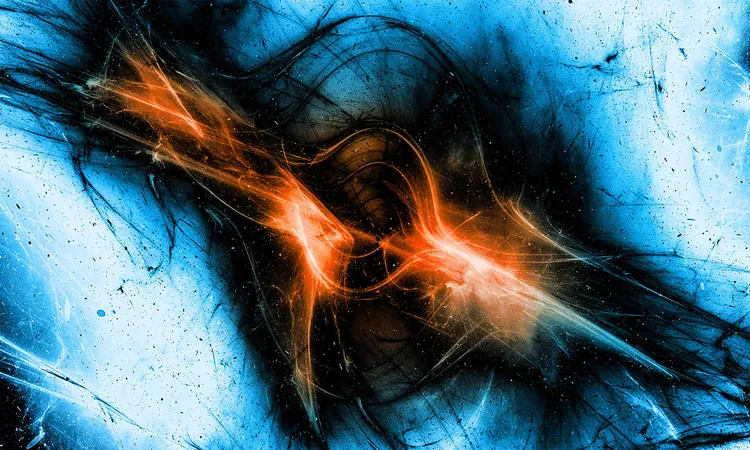
Shocking New Study Claims Dark Matter Doesn't Exist and the Universe is 27 Billion Years Old!
2025-09-01
Author: Yan
A Whole New Perspective on the Universe
At first glance, the universe appears straightforward—filled with stars, gas, and dust, gracefully bound by gravity. However, venture deeper, and the true complexity becomes evident.
The Standard Cosmological Model Under Fire
For years, scientists have embraced a model that suggests most of the universe is composed of invisible elements known as dark matter and dark energy, which have eluded direct observation. But now, an audacious new theory challenges this status quo.
Enter Rajendra Gupta: The Theory of No Dark Matter
Rajendra Gupta, a physics professor at the University of Ottawa, presents a provocative model that questions the necessity of dark matter and dark energy in explaining cosmic phenomena. According to Gupta, familiar assumptions have clouded our understanding, and his research suggests the universe could very well be 27 billion years old!
Merging Concepts: Tired Light and Changing Constants
Gupta’s groundbreaking theory combines two intriguing concepts: covarying coupling constants (CCC) and tired light (TL). CCC posits that the fundamental forces of nature may shift over time, while TL proposes that light loses energy as it traverses vast distances, changing its color toward red by the time it reaches our telescopes.
Debunking Dark Matter: Historical Context
The notion of dark matter originated in the 1930s, due to observations by astronomer Fritz Zwicky, who noted that galaxy clusters moved differently than expected, suggesting unseen mass. Today, dark matter is believed to comprise around 27% of the universe, while ordinary matter accounts for less than 5%. However, Gupta asserts that a universe governed by changing constants could eliminate the need for dark energy to explain cosmic acceleration.
How Redshift Fits into This Puzzle
A central part of Gupta's analysis revolves around redshifts, which reveal how light shifts toward longer wavelengths. By examining galaxy distributions at various redshifts, Gupta believes his CCC+TL framework can explain these patterns without dark matter.
What Does This All Mean for Cosmology?
If validated, Gupta’s model could revolutionize our understanding of the universe. This includes redefining cosmic timelines, accounting for formations of galaxies, and even how we perceive distances and time through redshift measurements.
Testing the CCC+TL Hypothesis
To confirm this bold theory, it must withstand rigorous testing against established observational data. This includes validating predictions regarding galaxy rotations, gravitational lensing patterns, and the cosmic microwave background.
The Challenge Ahead: Can ”Tired Light” Stand Up to Scrutiny?
Researchers are now focused on ensuring clearer tests and comparisons to definitively separate Gupta's model from existing theories. The stakes are high, as this alternative could shift our cosmic narrative significantly.
A Bold New Chapter in Cosmology Awaits
Could dark matter and dark energy merely be placeholders in a much larger mystery? As researchers dive into this uncharted territory, the final verdict on Gupta's theory will ultimately unfold through observation and evidence. This bold study in The Astrophysical Journal opens up thrilling possibilities for understanding the true nature and age of our universe!



 Brasil (PT)
Brasil (PT)
 Canada (EN)
Canada (EN)
 Chile (ES)
Chile (ES)
 Česko (CS)
Česko (CS)
 대한민국 (KO)
대한민국 (KO)
 España (ES)
España (ES)
 France (FR)
France (FR)
 Hong Kong (EN)
Hong Kong (EN)
 Italia (IT)
Italia (IT)
 日本 (JA)
日本 (JA)
 Magyarország (HU)
Magyarország (HU)
 Norge (NO)
Norge (NO)
 Polska (PL)
Polska (PL)
 Schweiz (DE)
Schweiz (DE)
 Singapore (EN)
Singapore (EN)
 Sverige (SV)
Sverige (SV)
 Suomi (FI)
Suomi (FI)
 Türkiye (TR)
Türkiye (TR)
 الإمارات العربية المتحدة (AR)
الإمارات العربية المتحدة (AR)